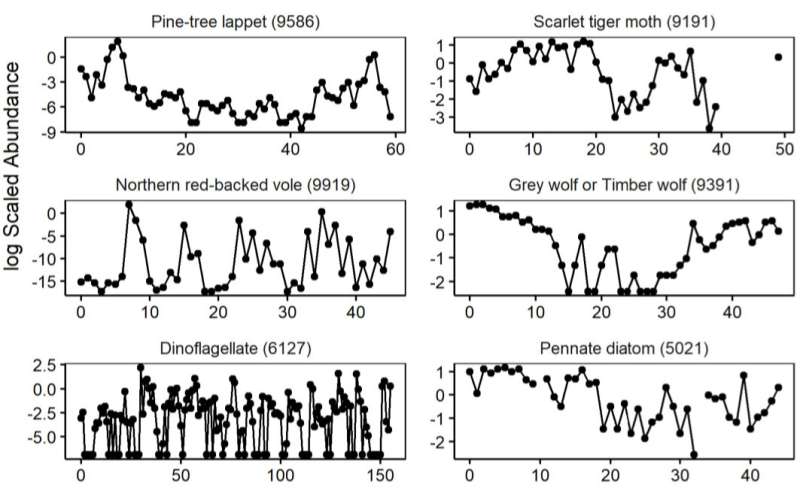Study finds chaos is more common in ecological systems than previously thought

Chaos in natural populations appears to be much more common than previously recognized, according to a new analysis by scientists at UC Santa Cruz and NOAA Fisheries.
Populations of organisms in natural ecosystems fluctuate a lot, and a key question for ecologists is whether those fluctuations are regular (varying around some theoretically "stable" equilibrium), random (completely unpredictable), or chaotic. Chaotic systems, like the weather, can be predictable in the short term but not in the long term, and they are highly sensitive to small differences in the initial conditions.
"Knowing whether these fluctuations are regular, chaotic, or random has major implications for how well, and how far into the future, we can predict population sizes and how they will respond to management interventions," said Tanya Rogers, a NOAA Fisheries ecologist and research fellow at UCSC's Institute of Marine Sciences.
Rogers is first author of the new study, published June 27 in Nature Ecology & Evolution. Her coauthors are Bethany Johnson, a UCSC graduate student in applied mathematics, and Stephan Munch, a NOAA Fisheries ecologist and adjunct professor at UCSC in the Departments of Applied Mathematics and Ecology and Evolutionary Biology.
The researchers found evidence of chaotic dynamics in over 30 percent of the populations they analyzed in an ecological database. Previous meta-analyses assessing the prevalence of chaos in natural field populations had found chaos to be absent or rare. But that may have been due to limited amounts of data and the use of inadequate methods, rather than the inherent stability of ecosystems, the authors said.
"There's a lot more data now, and how long a time series you have makes a big difference for detecting chaotic dynamics," Munch said. "We also showed that methodological assumptions made in prior meta-analyses were biased against detecting chaos."
For the new study, the researchers used new and updated chaos detection algorithms and put them through rigorous testing on simulated data sets. Then they applied the three best methods to a dataset of 172 population time series from the Global Population Dynamics Database.
Their analysis revealed interesting associations between chaotic dynamics, lifespan, and body size. Chaos was most prevalent among plankton and insects, least prevalent among birds and mammals, and intermediate among fishes.
"A lot of short-lived species tend to have chaotic population dynamics, and these are also species that tend to have boom-and-bust dynamics," Rogers said.
The results suggest there may be intrinsic limits to ecological forecasting and caution against the use of equilibrium-based approaches to conservation and management, particularly for short-lived species.
"From the fisheries management perspective, we want to predict fish populations so we can set limits for fishery harvests," Rogers explained. "If we don't recognize the existence of chaos, we could be losing out on short-term forecasting possibilities using methods appropriate for chaotic systems, while being overconfident about our ability to make long-term predictions."
More information: Tanya Rogers, Chaos is not rare in natural ecosystems, Nature Ecology & Evolution (2022). DOI: 10.1038/s41559-022-01787-y. www.nature.com/articles/s41559-022-01787-y
Journal information: Nature Ecology & Evolution
Provided by University of California - Santa Cruz


















